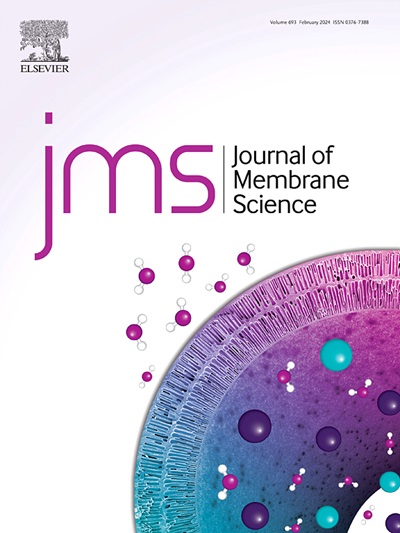Investigating organic fouling of ultrafiltration membranes using RP-HPLC fractionated SMP from an AnMBR and advanced QCM-D and LSPR analysis
IF 8.4
1区 工程技术
Q1 ENGINEERING, CHEMICAL
引用次数: 0
Abstract
Anaerobic membrane bioreactors (AnMBRs) have emerged as an appealing technology for wastewater treatment. However, organic fouling, particularly by soluble microbial products (SMP), presents a major challenge to their operation. The characteristics of the organic fractions comprising SMP affect the degree and reversibility of membrane fouling. However, fractionating SMP to identify the components most responsible for fouling remains difficult. Advanced methods are required to investigate the interactions between organic matter and membranes. This study presents a robust method for fractionating SMP using reverse-phase high-performance liquid chromatography with a semi-preparative C4 reverse-phase column and a highly sensitive approach for investigating interactions between the membrane and organic matter using localized surface plasmon resonance (LSPR) analysis. Following optimization of the proposed method, the effect of each organic fraction on membrane fouling was investigated through ultrafiltration tests and by quartz crystal microbalance with dissipation monitoring (QCM-D) and LSPR analysis. The SMP was separated into five fractions that differed mainly in hydrophilicity and thus each affected fouling differently. However, the original SMP mixture collected from an AnMBR caused the most severe fouling and exhibited the highest accumulation on the QCM-D and LSPR membrane-mimetic sensors. This result is attributed to synergistic fouling and adsorption effects. The LSPR dry mass adsorption correlated most strongly with the ultrafiltration membrane fouling results. Combining LSPR analysis, which measures dry mass accumulation, with QCM-D, which measures hydration and viscoelasticity, enables the comprehensive assessment of fouling potential and fouling evolution over time.

利用反相高效液相色谱法分离AnMBR中SMP及先进的QCM-D和LSPR分析研究超滤膜的有机污染
厌氧膜生物反应器(anmbr)已成为一种具有吸引力的污水处理技术。然而,有机污染,特别是可溶性微生物产物(SMP)的污染,对其运行提出了重大挑战。SMP有机组分的特性影响膜污染的程度和可逆性。然而,对SMP进行分馏以确定导致结垢的主要成分仍然很困难。需要先进的方法来研究有机物质与膜之间的相互作用。本研究提出了一种强大的方法,利用半制备C4反相柱的反相高效液相色谱分离SMP,并利用局部表面等离子体共振(LSPR)分析来研究膜与有机物之间的相互作用。在优化方法的基础上,通过超滤试验、石英晶体微天平耗散监测(QCM-D)和LSPR分析,研究了各有机组分对膜污染的影响。SMP被分成五个部分,主要是亲水性不同,因此每个部分对污垢的影响不同。然而,从AnMBR中收集的原始SMP混合物引起了最严重的污染,并且在QCM-D和LSPR膜模拟传感器上表现出最高的积累。该结果归因于协同污染和吸附效应。LSPR干质量吸附与超滤膜污染结果相关性最强。将测量干质量积累的LSPR分析与测量水化和粘弹性的QCM-D相结合,可以全面评估结垢潜力和结垢随时间的演变。
本文章由计算机程序翻译,如有差异,请以英文原文为准。
求助全文
约1分钟内获得全文
求助全文
来源期刊

Journal of Membrane Science
工程技术-高分子科学
CiteScore
17.10
自引率
17.90%
发文量
1031
审稿时长
2.5 months
期刊介绍:
The Journal of Membrane Science is a publication that focuses on membrane systems and is aimed at academic and industrial chemists, chemical engineers, materials scientists, and membranologists. It publishes original research and reviews on various aspects of membrane transport, membrane formation/structure, fouling, module/process design, and processes/applications. The journal primarily focuses on the structure, function, and performance of non-biological membranes but also includes papers that relate to biological membranes. The Journal of Membrane Science publishes Full Text Papers, State-of-the-Art Reviews, Letters to the Editor, and Perspectives.
 求助内容:
求助内容: 应助结果提醒方式:
应助结果提醒方式:


